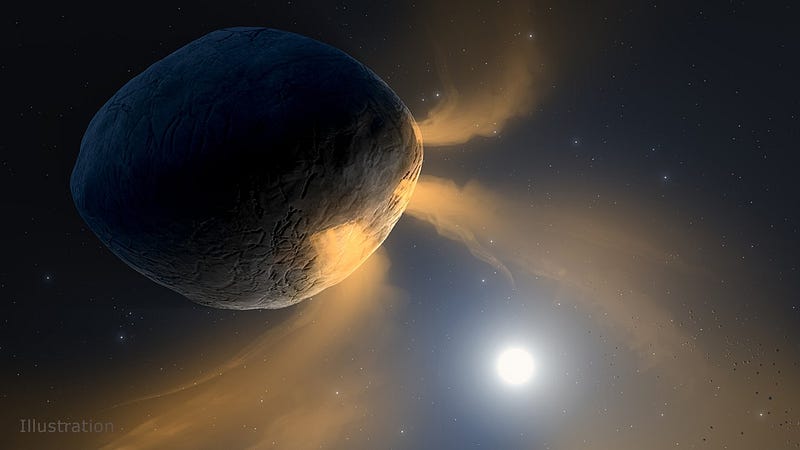# Asteroid Phaethon: Uncovering the Mystery of Sodium Loss
Written on
Chapter 1: Understanding Meteor Showers
Have you been enjoying this year's Perseids meteor shower? Although weather conditions like rain and smoke have posed challenges for some observers, the astrophotography shared on social media has been stunning. Reports of significant outbursts from various monitoring systems, including the SETI Institute’s Cameras for All-Sky Meteor Surveillance program, have emerged. The shower continues, so don’t miss the chance to catch some meteors!
What triggers a meteor shower? When comets enter the inner solar system, they are warmed by the Sun, shedding icy particles and dust. These particles maintain a shared orbit with the comet, trailing slightly behind. When Earth's orbit intersects with this debris, the particles enter our atmosphere and burn up, creating the luminous streaks we associate with meteor showers. Some larger fragments can even produce brilliant fireballs.
Thanks to tracking methods, we can trace these meteors back to their origins based on their atmospheric entry angles and trajectories, allowing us to identify their parent bodies. For instance, the parent body of the Perseids is Comet Swift-Tuttle, discovered in 1862, which completes an elliptical orbit around the Sun every 133 years.
However, the Perseids are not the only prominent meteor shower each year. The Geminids, happening in December, present a unique case. Unlike typical meteor showers caused by comets, the Geminids originate from asteroid 3200 Phaethon—a fascinating anomaly that has piqued scientists' curiosity.

Chapter 2: The Unique Case of Asteroid Phaethon
Phaethon is often referred to as a "dead comet" or "rock comet." It follows an elliptical orbit, completing a revolution around the Sun in just 1.4 years. Interestingly, it brightens as it approaches the Sun. But how can a rocky body exhibit such brightness and produce sufficient dust for a notable meteor shower? Recent research published in the Planetary Science Journal suggests that sodium might be the key.
According to the study, as Phaethon nears the Sun, its sodium content heats up and vaporizes. While this process may have depleted the surface sodium long ago, the interior sodium still heats up and escapes through cracks in Phaethon’s outer layer. This phenomenon could create jets that propel rocky debris into space, thus explaining the asteroid's comet-like brightness and the low sodium content in the Geminid meteoroids.
To investigate this sodium hypothesis, researchers analyzed samples from the Allende meteorite, which fell in Mexico in 1969. This carbonaceous chondrite meteorite shares a composition similar to Phaethon. The team heated chips from the meteorite to temperatures that Phaethon would experience at its closest approach to the Sun, discovering that the sodium was lost while other elements remained intact.
This study reinforces the notion that our classifications of comets and asteroids require reevaluation, much like our evolving understanding of what constitutes a planet.
For further details, refer to the NASA JPL press release and the paper titled "Volatility of Sodium in Carbonaceous Chondrites at Temperatures Consistent with Low-perihelion Asteroids" by Joseph R. Masiero et al., published on August 16, 2021, in The Planetary Science Journal.